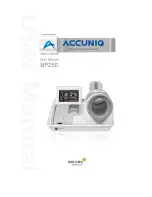
POD300 - 3
POD DISPLA
Y
DATA LOGGING
ADD CHANNEL -
You must first pick what channels
you want to log. You can choose from the PCV net-
work or WB2. When you first enter your selection you
will see the full list of channels available for logging. As
you choose which one you want this channel will drop
off the list
VIEW/REMOVE CHANNEL -
This removes the chan-
nels form the list you want to log and puts them back
into the main ADD CHANNEL list.
DELETE LOGS
- Remove stored logs from the unit.
The unit has 4 slots of internal memory that you can log
to. Once the slot is full logging will automatically stop.
If a slot is full it will automatically start logging to a new
slot on the next initialization. If you START/STOP a log
and the slot is not full on your next log initialization it will
write to a new slot also.
SAMPLING RATE -
Choose the sampling rate in
which you want the data to be exported at.
PCV FUEL TRIMS
LOW -
Adjust the first third of your RPM range. Use
the + / - symbols to increase/decrease the fuel of this
range by up 20%
MID -
Adjust the second third of your RPM range. Use
the + / - symbols to increase/decrease the fuel of this
range by up 20%
HIGH -
Adjust the last third of your RPM range. Use
the + / - symbols to increase/decrease the fuel of this
range by up 20%
Example: If your engines RPM range is 12000rpm
LOW=0-4000 MID=4001-8000 HIGH=8001-
12000
These ranges can be adjusted in Control Center Soft-
ware of Power Core software if desired.
USB MODE
Allows the module to be put into PC link mode while the unit
is connected to a running vehicle. This allows you to pull the
logs while vehicle is running.
CONFIGURE ALARMS
Alarms can be setup based on 1-3 channels and trig-
gered by less than or greater than.
1 channel alarm example:
RED light is triggered when ENGINE RPM is greater
than 10000rpm
2 channel alarm example:
YELLOW light is triggered when AFR is greater than
14.0 AND greater than 60% throttle
3 channel alarm example:
GREEN light is triggered when AFR is greater than 12.8
AND less than 13.8 AND greater than 10% throttle
WB2 SETUP
WB2 LAMBDA SETUP
O2 Out Threshold -
.9 -1.1, default value = 1 - Sets up
the Narrowband O2 Out function on the Wideband 2 (green
wire). Changing this value will change the AFR that WB2
switches the narrowband signal around. For example, if using
a value of .95, the WB2 will emulate a narrowband voltage
signal that switches to rich if the Lambda reading is lower
than .95, and lean if the Lambda reading is higher than .95
Lambda Smoothing -
smooths, or averages, the AFR and
Lambda channels. Lower values will result in the highest
resolution, minimal latency, and would be preferred in
situation where you are datalogging.
Stoich Value -
Predetermined stoichiometric values for
different fuels.
WB2 RPM SETUP
RPM Multiplier -
adjusts the RPM multiplier used for the
RPM input on the WB2. In order to acquire an accurate tach
signal reading, you will need to adjust this setting for your
application. This setting is for WB2 only.
Tach Smoothing -
smooths the RPM input signal of the
WB2. This setting is useful to stabilize, or dampen the RPM
signal displayed on the WB2.
Tach Signal filter -
filters out invalid RPM signal inputs.
This setting can be adjusted if you notice the tach reading
displayed on the WB2 is unstable, spiking, or otherwise
inconsistent.
The following settings are useful for vehicles that have a CDI
(capacitive discharge ignitions) system.
Attenuate Signal -
(setting is either active or inactive)
Makes the RPM input signal smaller (less voltage) to filter out
noise. This setting is for WB2 only.
Bias Signal -
will bias the entire RPM signal input to a
higher voltage. The ability to activate this feature only ap-
pears when “Attenuate Tach Signal” is selected.
Rising Edge -
allows the WB2 to measure the rising edge
on the RPM voltage signal.
WB2 ANALOG INPUTS
Allows you to name and configure the 0-5v analog input of
the WB2. Measure your low and high voltages of this signal
and input them accordingly.






















